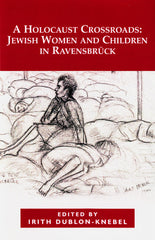A Holocaust Crossroads
Edited by: Dublon-Knebel, Irith
Ravensbruck was the only major Nazi concentration camp built for women. Its history constitutes a crossroads in the various stages of the Third Reich's persecution of women accused of offending the Nazi state and of those ethnically and racially persecuted. Women from different social strata, national, ethnic and religious origins were forced to live together under the most extreme conditions within the social system created by the SS. Among the many crossroads of Ravensbruck was the one in which citizens from the surrounding area, as well as citizens of many of the small towns in which Ravensbruck's external camps were located, came across the prisoners and witnessed the events. From its first days until its liberation, thousands of Jewish women, girls and children were among Ravensbruck's prisoners. They were part of the camp's population even when the industrial mass killing was 'exported' to the East - and Germany, including its concentration camps, was to be 'freed' of all Jews. Against the overall background of the Nazi concentration camps and Holocaust historiography, this collection of essays provides a socio-historical in-depth analysis of the singularity of the female Jewish experience by focusing on the Jewish experience in the microcosm of Ravensbruck.
298 pages
Copyright: 3/1/2010




